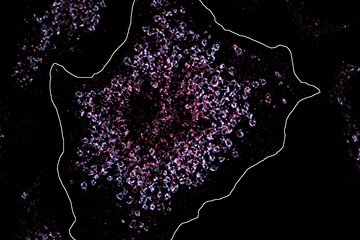Pills from the 3D printer
Special shapes can release active substances in a controlled manner
Pills could soon be produced in shapes that resemble design objects. And this would not be just an aesthetic gimmick, but would serve to release active medical ingredients in the body in a controlled manner. A group of computer scientists from the Max Planck Institute for Informatics in Saarbrücken and the University of California at Davis have developed a process that uses a combination of computation and 3D printing to produce tablets that dissolve in liquids over a specified period of time. The approach could be of interest to the pharmaceutical industry, which has focused heavily on 3D printing recently.

For a drug treatment to be successful, it must be possible to adjust the concentration of the active ingredients in the body to a desired level. This is relatively easy to do with an intravenous infusion because the active ingredient level can be kept constant by adminstering a high dose first and then continuing with regular smaller doses to maintain the level once it has been reached.
This is much more difficult in a therapeutic approach where tablets are administered. One possibility would be to produce tablets from different components each with different concentrations of the active ingredients. But such tablets would be difficult to produce. The great advances in 3D printing technology have provided a more viable option. Complex shapes can be created with relatively little effort, including tablets in a variety of geometric shapes. So, the shape of the tablet is the only factor controlling the release of an active ingredient if it is evenly distributed in the carrier material.
Inverse design for tablet shape
A research group led by Vahid Babaei, Research Group Leader at the Max Planck Institute for Informatics, and Julian Panetta, Professor at the University of California at Davis, is using mathematical modelling and experiments to determine which tablet shape releases the desired quantity of an active ingredient during dissolution in the digestive tract, thus ensuring the necessary level of active ingredient in the body. For the first time, the team is applying an inverse design and so-called topology optimization. In this method, which was developed for the design of mechanical components, the properties of a geometric figure are first defined.

So in the case of the tablets, the researchers first define the temporal profile in which the tablet should release its active ingredient. Then, they calculate the shape that has exactly this release profile. To do this, they use a model that records how geometric figures with different shapes dissolve in a liquid. The calculated structures sometimes resemble salt crystals, sometimes diatoms and sometimes even extravagant design objects. The team now prints these shapes from a water-soluble material also used commercially in 3D printing. The researchers have demonstrated in experiments that a tablet with a computer-modelled shape actually releases an active ingredient relatively exactly in the intended time period. These experiments involved dissolving various tablets in water and determining the concentration of the substance in the solution via its light transmission. To ensure that even tablets with bizarre shapes can still be swallowed, it is possible to produce them from a soft carrier material or encase them in a fast-dissolving capsule.
Optimization for mass production
However, finding the optimal tablet shape that sets a desired drug level in the body is not the only strong point of inverse design; it can also take into account how the manufacturing process constrains the choice of shapes. After all, while 3D printing makes it relatively easy to produce arbitrary structures, it is not economical enough for mass production. But, scientists can modify the inverse design conditions so that only shapes that can be created by extrusion are calculated. In this common industrial process, a liquid mass is pressed through a template, which gives the material strand a shape, and solidifies; the strand is then cut into shorter sections. In this way, inverse design could lead to greater shape diversity not only in pharmaceuticals, but also, for example, in the production of fertilizer or catalyst bodies for chemical production.













